 |
|
| How to repair seized rear toe arms - Mk1a and Mk1b |
Description An illustrated guide to replacing the turnbuckle tube on a Mk1
Author Icsunonove
Date Sat Nov 03, 2007 10:16 am
Type Picture How-To
Category Suspension
Views 10425
|
How to repair seized rear toe arms - Mk1a and Mk1b
An illustrated guide to replacing the turnbuckle tube on a Mk1 |
 |
If the wheel alignment is checked and found to be out of tolerance the rear toe arms may need to be adjusted. Unfortunately there have been many reports of people trying to adjust them and failing.... ![Sad [Sad]](images/smiles/icon_sad.gif)
If the assembly can't be adjusted on the car it is worth trying to free it off in a vice. However there is no guarantee that this will work ![Sad [Sad]](images/smiles/icon_sad.gif)
If both the outboard balljoint and the inboard spherical bearing are in good condition then it is worth replacing the turnbuckle tube (as it only costs approximately '14 a side ![thumleft [thumleft]](images/smiles/icon_thumleft.gif) ). ).
On the rear of the car the toe is controlled by a toe arm which has three main components. The outboard balljoint with a right handed thread, an inboard spherical joint with a left handed thread and a turnbuckle tube which joins the two together with left and right handed threads on either end. The threads on both ends of the turnbuckle tube are split which allows a "C" clamp to lock both ends in position.
Unfortunately this design is prone to seizure as the split in the threads allows the ingress of water and hence rust ![Sad [Sad]](images/smiles/icon_sad.gif) . After almost 20 years that means it is virtually impossible to free them off... . After almost 20 years that means it is virtually impossible to free them off... ![Brick wall [Brick wall]](images/smiles/eusa_wall.gif)
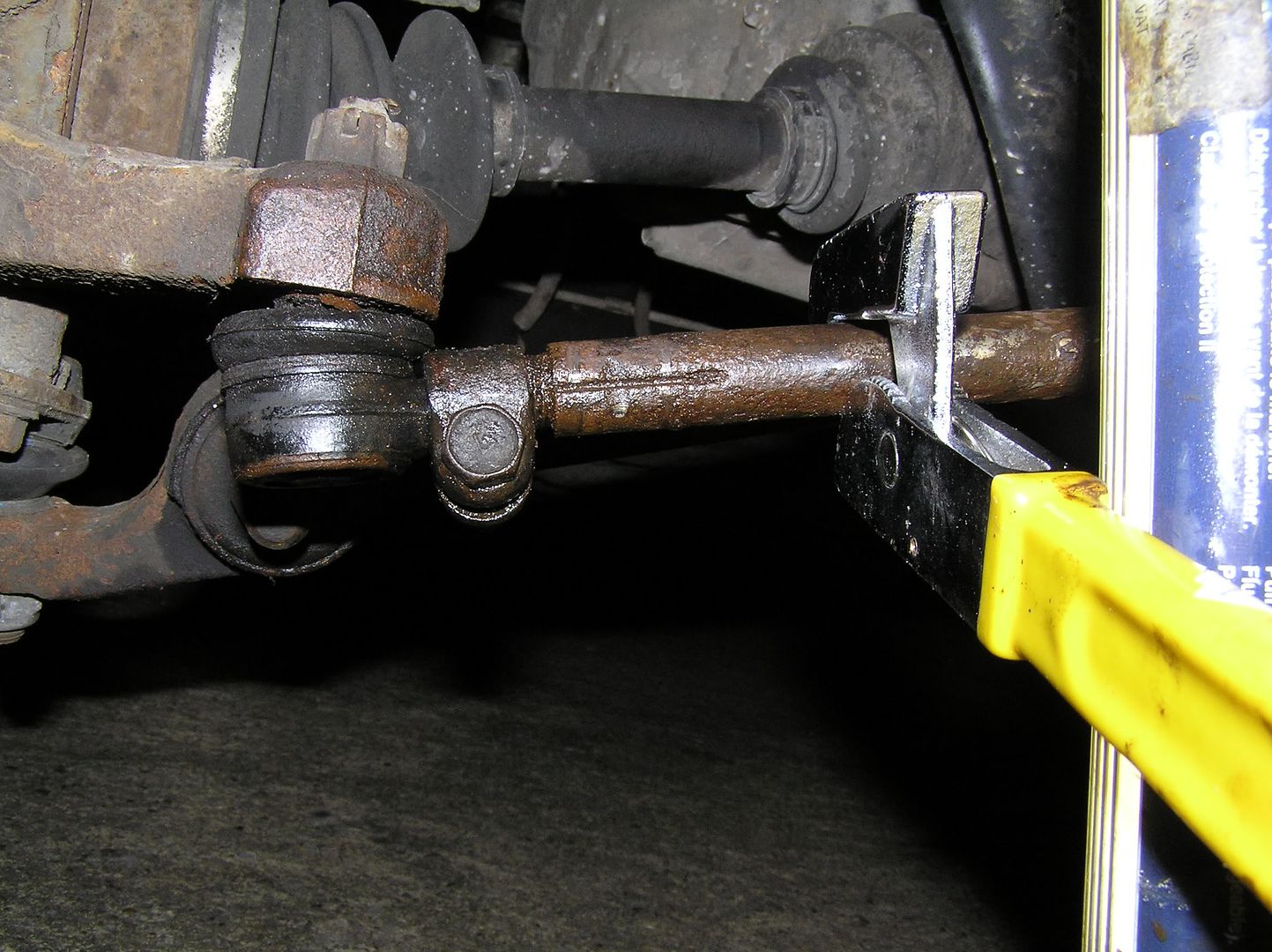
The Mk1a and Mk1b assemblies differ. The Mk1a assembly has a semi-circular protrusion on the end of both the balljoint and the spherical bearing. These overlap to ensure that the alignment is correct between the two components so that there is free angular movement once adjusted. This makes it even more awkward to disassemble. ![Sad [Sad]](images/smiles/icon_sad.gif) The arrangement on the Mk1b is similar but does not have the unnecessary protrusions on the ends of the balljoint and spherical bearing. The arrangement on the Mk1b is similar but does not have the unnecessary protrusions on the ends of the balljoint and spherical bearing.
Mk1a assembly (click to view full size):
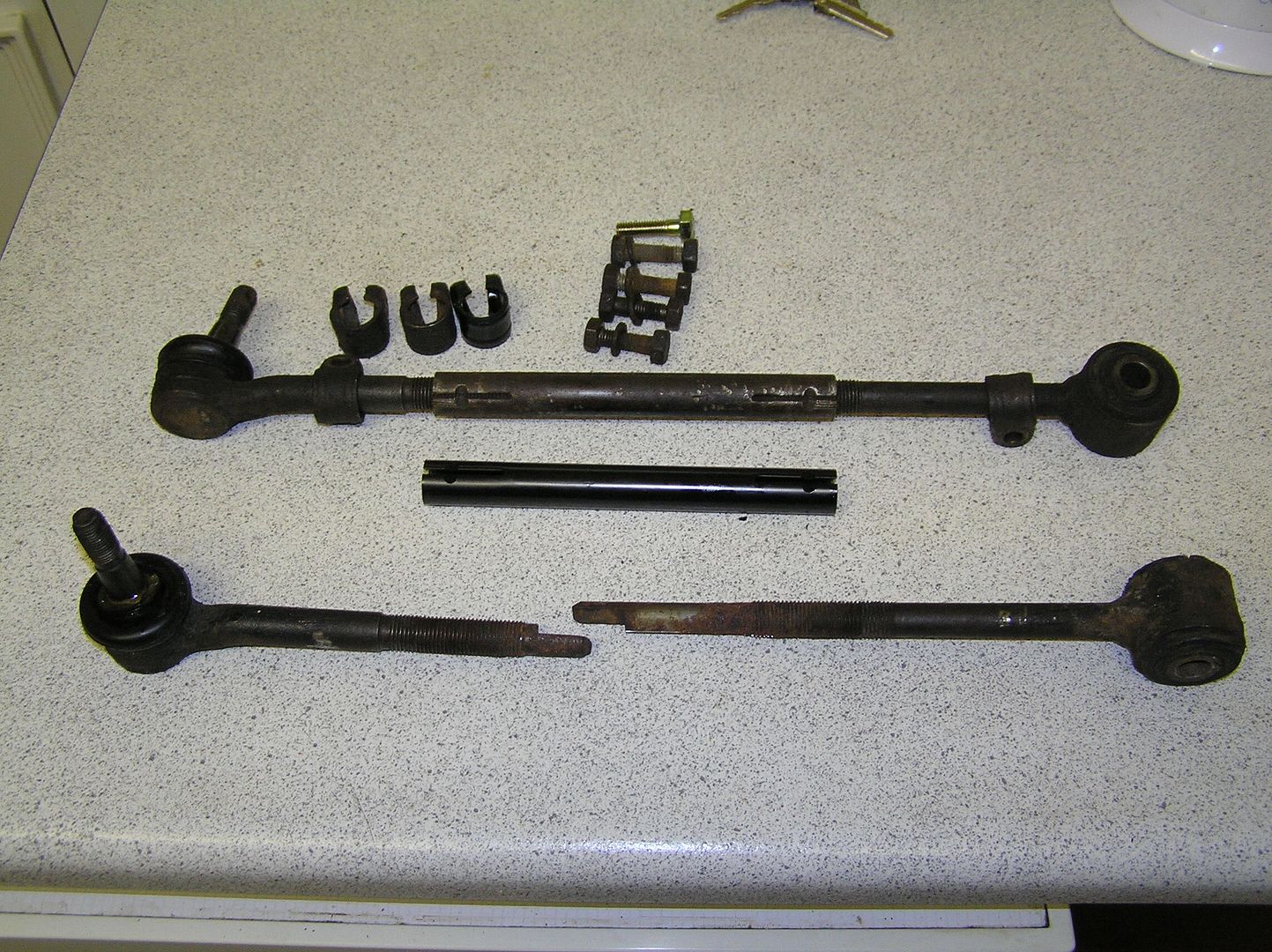
At the top you can see the toe arm assembled. At the bottom you can see the components disassembled. You can clearly see the semi-circular protrusions on the balljoint and spherical bearing which ensures correct angular alignment between both components. This is overkill (in my humble opinion) and is not on the Mk1b.
Mk1b assembly:
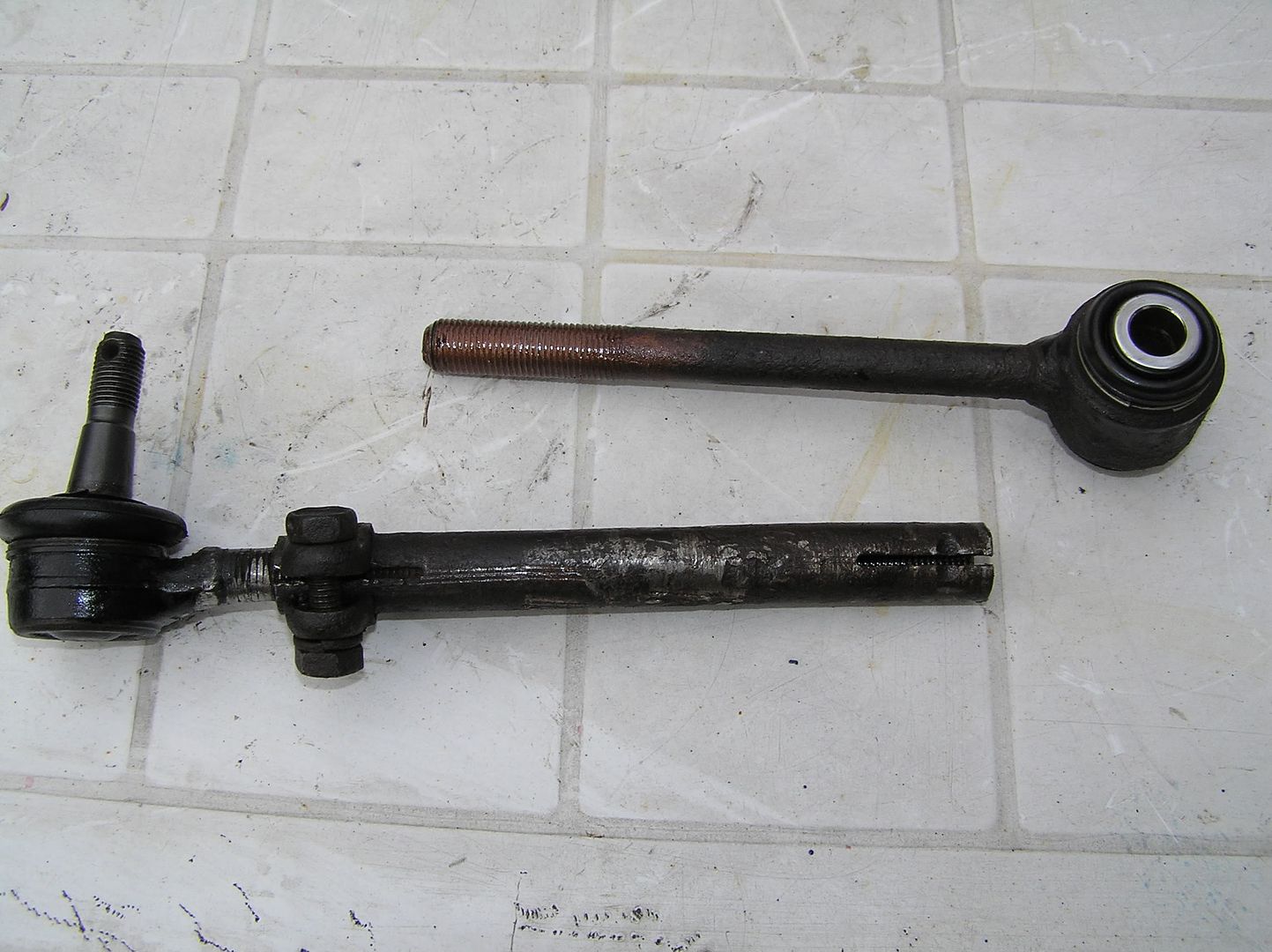
It's a similar arrangement but the lengths of the components are different. However there is no semi-circular protrusion on either the balljoint or the spherical bering. The turnbuckle tube itself is identical to the Mk1a.
You can try and free off the components to reuse the original tube but don't be surprised if you can't undo them. To try and remove the spherical bearing you can use a 3/8" extension bar. Here I am using a 3/8" extension bar, a 3/8" to 1/4" adaptor and a 12" and 6" 1/4" extension bar. By applying a lot of heat I finally shifted it. ![thumleft [thumleft]](images/smiles/icon_thumleft.gif)
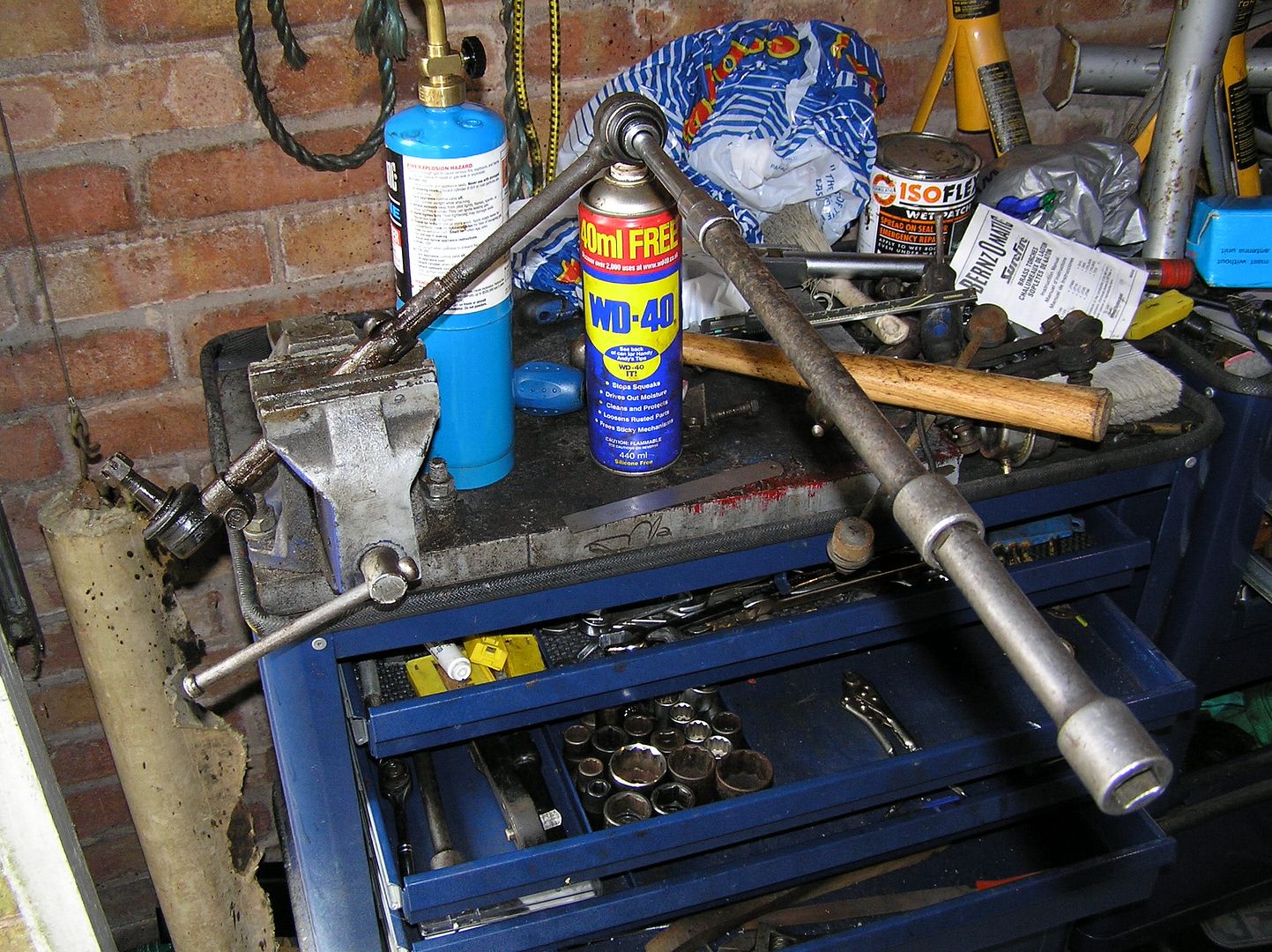
To try and remove the balljoint you can grind some flats on the balljoint and apply some force on the balljoint itself (not too much or you'll damage it). To prevent the turnbuckle tube collapsing use a 3/8" extension bar.

Despite applying heat, grinding a 12mm flat on the balljoint and using two 12mm AF open spanners and a jack handle tube on the balljoint itself I still couldn't shift it! ![Brick wall [Brick wall]](images/smiles/eusa_wall.gif)
Ok, time to get serious! ![Evil or Very Mad [Evil or Very Mad]](images/smiles/icon_evil.gif) The turnbuckle tube has to be replaced.. The turnbuckle tube has to be replaced..
To do this you need a Dremel (or equivalent) and some cutting discs. Each thread is split on one side so you need to split the thread at 180 degrees to the split and cut off the semi-circular section to release each end.
This is the originally split side. Here you can see I have extended the split beyond the threaded section:
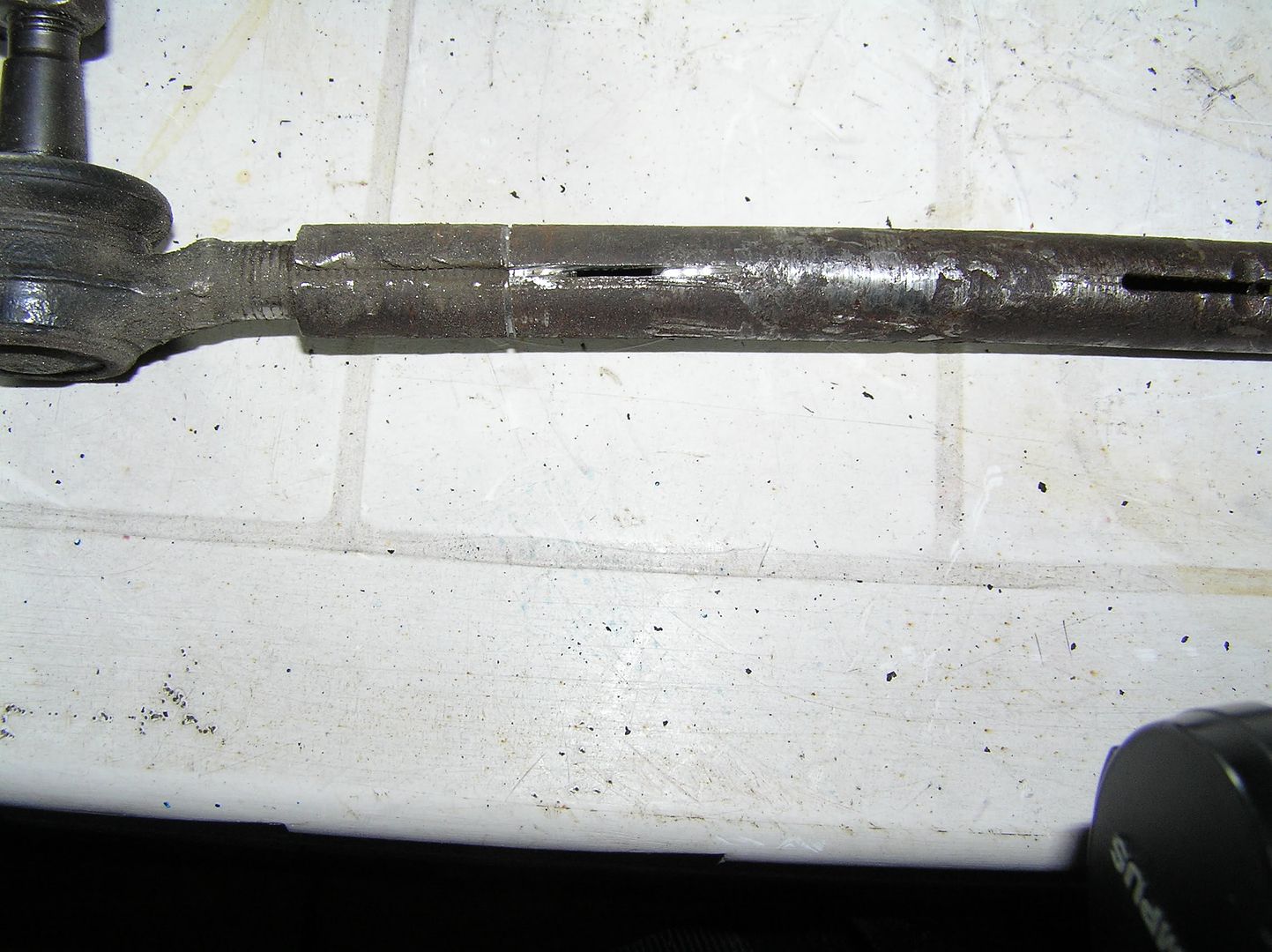
This is the opposite side (180 degrees away) where i have made a second split:
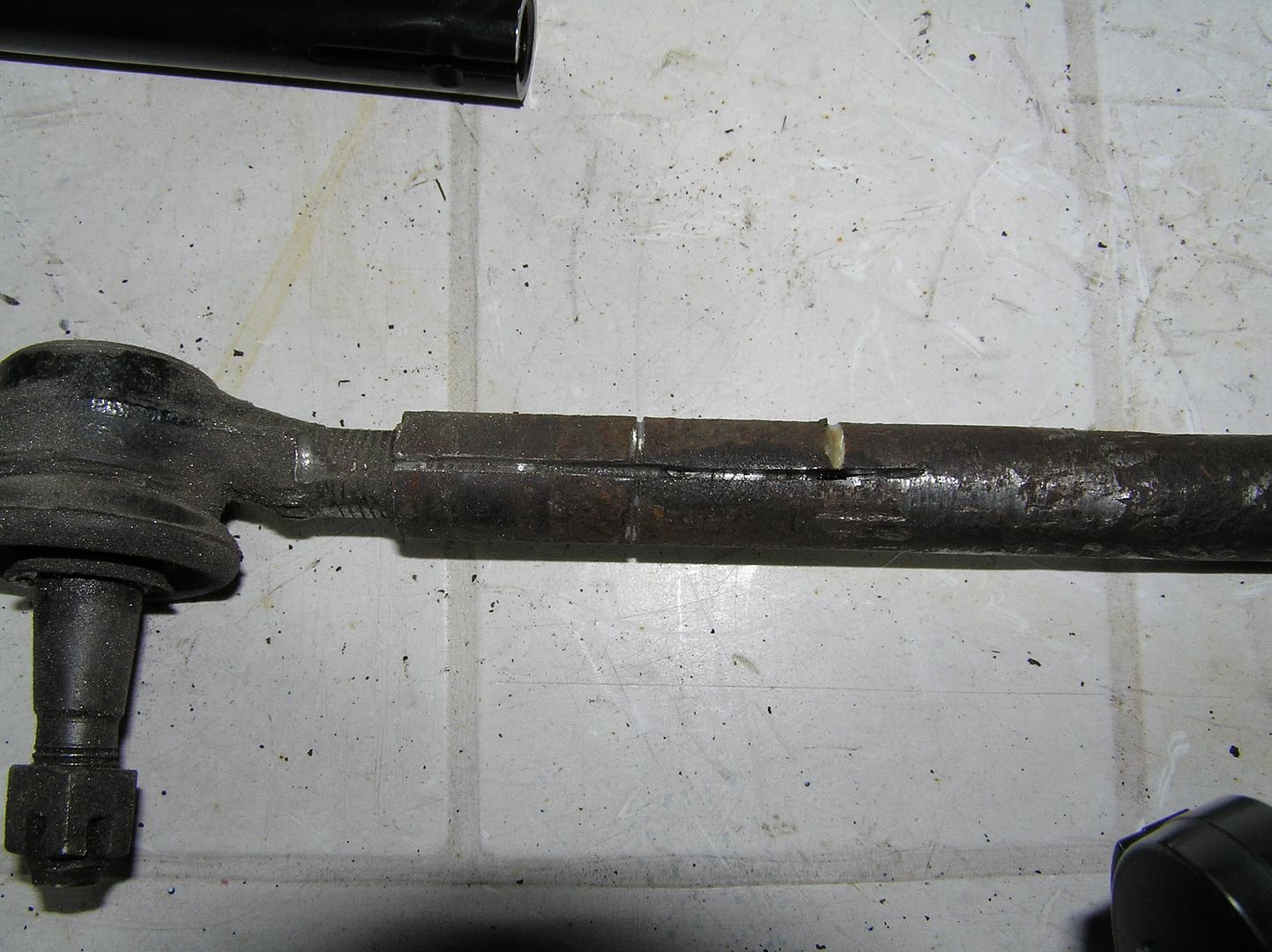
Here I am prising the seized thread off the balljoint:

The thread prised apart:
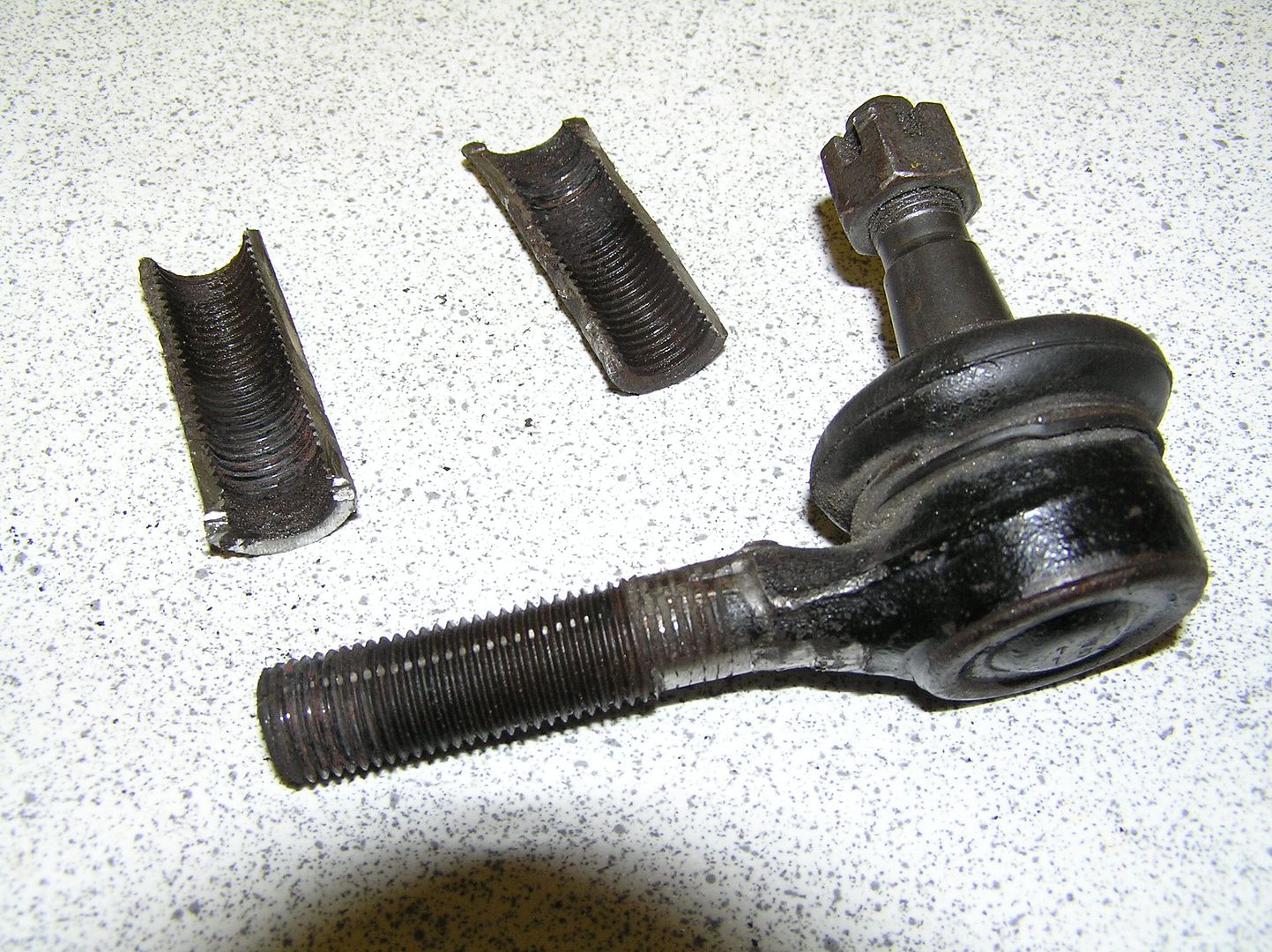
Once each end is released brush the threads with a wire brush to remove any rust. Run each end into the new turnbuckle tube to check whether the threads are good and clean.
Grease up and reassemble the joint ensuring that you screw the same amount of thread into either end:
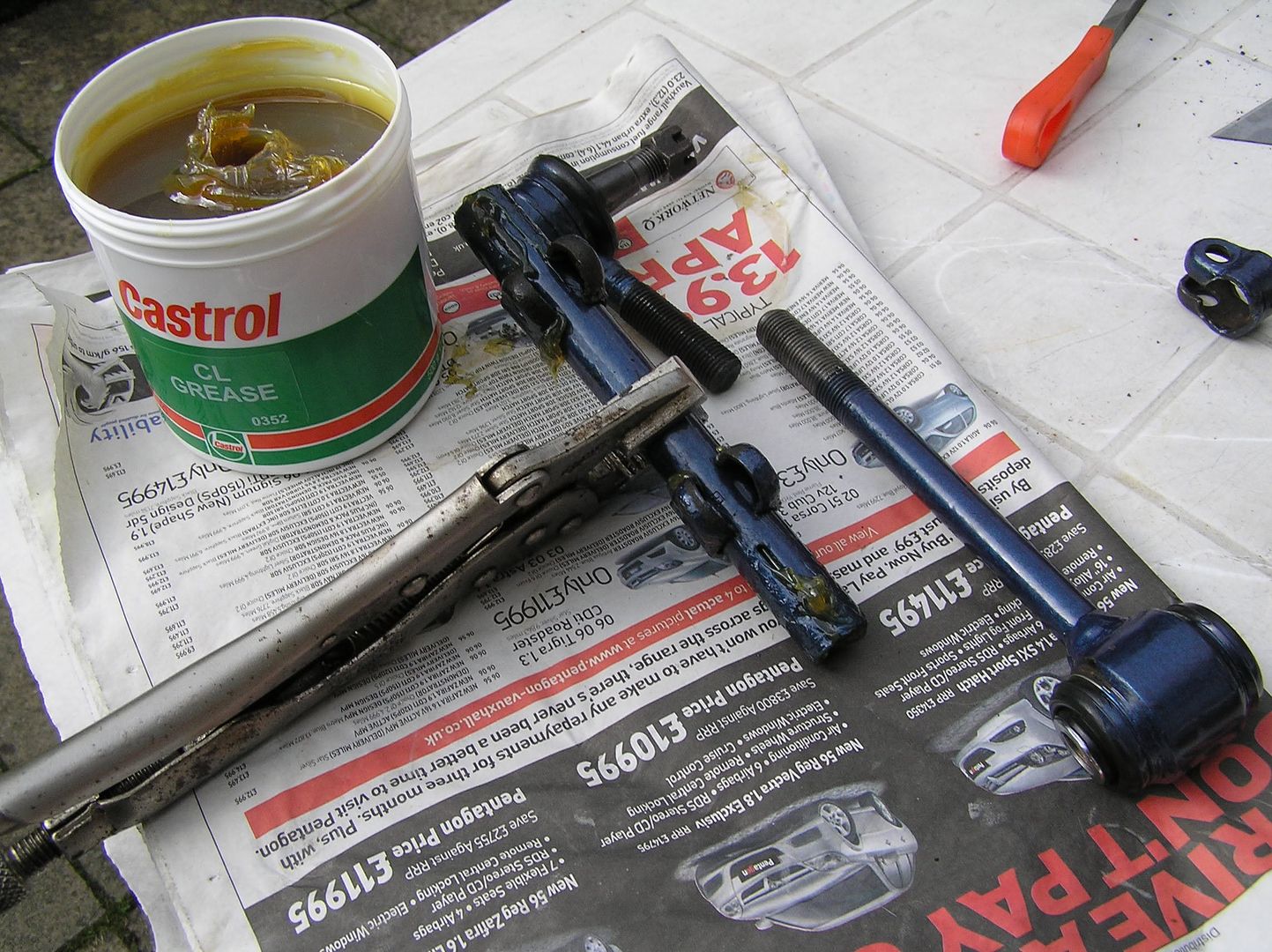
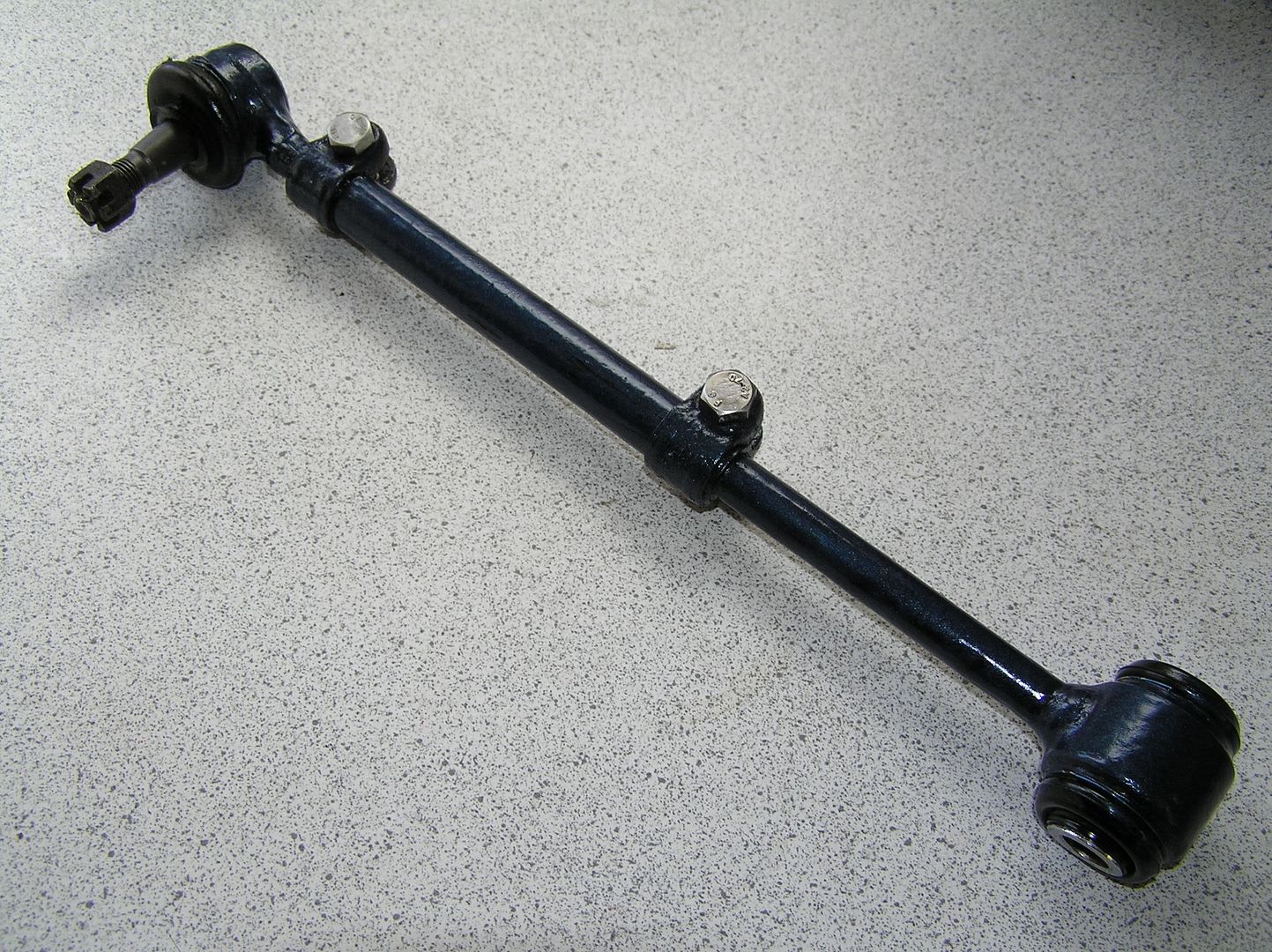
Fit to car and adjust to correct the toe (see my other Knowledge Base article on how to do this *not yet done*):
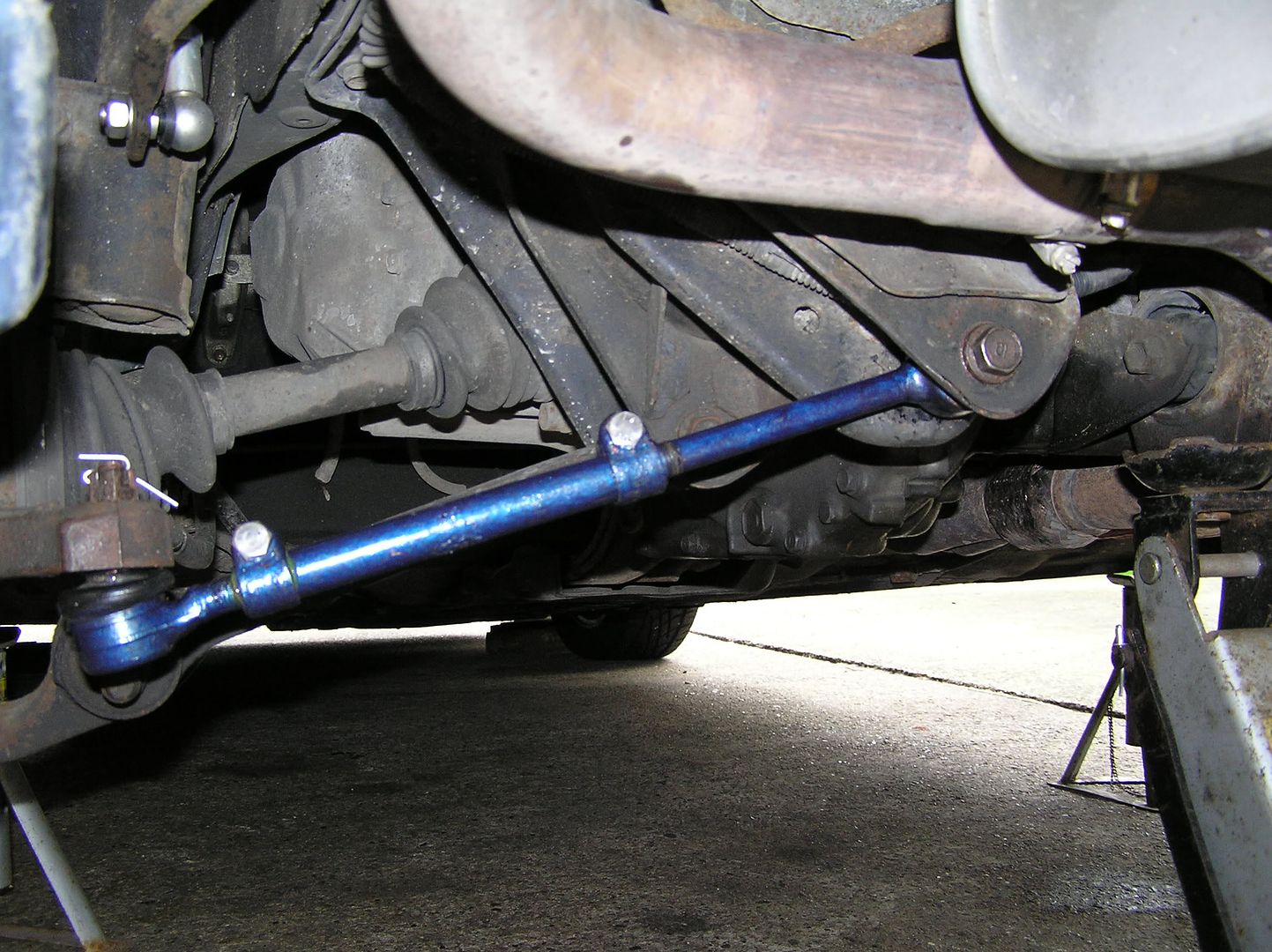 |
| |
| User comments |
| ligertigon: Sat Mar 21, 2009 7:29 pm |
|
Excellent write up.
I recently replaced these tubes in situ, though to remove, I ended up removing the inner tie rod which is easy as there is a hole where you can poke a bar through and unscrew.
I found it impossible to remove the tube from the outer ball joint even when I welded a bar onto it ![Shocked [Shocked]](images/smiles/icon_eek.gif) . .
In the end, I used a grinder with cutting disk and carefully continued to cut along the already exposed slot. I didn't go too far in, but using a large flat head srewdriver, I prised the slot open along its length, and with a vicegrip, screwed the tube off with little difficulty.
To finish, I welded large nuts onto the centre of the new tubes to insure easy adjustment. HTH |
|
 |
| Page 1 of 0 |
All times are GMT
Goto page |
Powered by Knowledge Base, wGEric © 2002 PHPBB.com MOD
This script (Knowledge Base - MX Addon v. 1.03e) is modified by Haplo
|
Powered by phpBB © 2001, 2005 phpBB Group
|
